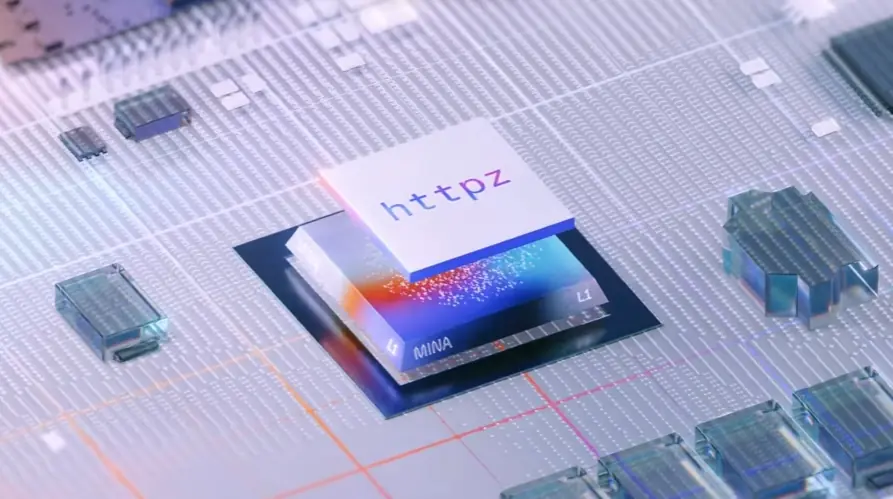
How can a 3D animated teaser video boost my marketing funnel?
Animated teasers capture attention and drive traffic early in the marketing funnel, boosting engagement and generating interest.
What makes a 3D animated teaser effective for lead generation?
Effective animated teasers showcase key features/services captivatingly, converting viewer interest into qualified leads.
How can I maximize a 3D animated teaser's impact in a short time?
Concise, visually striking teasers, optimized for social media, deliver powerful messages quickly, maximizing short-term impact.
How do I define the visual style of my 3D animated teaser for my audience?
Defining visual style involves understanding target audience preferences, demographics, and online behavior to ensure resonance.
What storyboarding techniques create a compelling narrative hook for a teaser?
Compelling narratives use storyboarding to establish a clear arc, introduce conflict, and end with a cliffhanger, leaving viewers wanting more.
Which 3D animation styles best suit impactful teasers?
Impactful teaser styles include cel-shaded, minimalist, or motion graphics, chosen based on desired tone and message.
How does sound design enhance a 3D animated teaser's mood and message?
Sound design enhances mood, builds anticipation, and reinforces the message, creating immersive experiences.
What factors influence a 3D animated teaser's production timeline?
Production timelines (3-8 weeks) depend on complexity, length, and revisions. Fixed-fee pricing ensures budget predictability.
How can brand assets be seamlessly integrated into a 3D animated teaser?
Brand assets (logos, colors, typography) are seamlessly integrated, reinforcing brand identity and visual cohesion.
What are the key principles for writing a concise, impactful teaser script?
Concise teaser scripts focus on a single core message, using active voice and creating urgency/intrigue.
What call to action optimizes a 3D animated teaser for conversions?
Clear calls to action ("Learn More," "Visit Website") optimize conversions by guiding viewers.
How can my 3D animated teaser stand out?
Unique visuals, compelling narratives, and memorable sound design make teasers stand out.
How can a 3D animation build brand awareness?
Animations build brand awareness by showcasing brand personality and values visually.
How can I repurpose my 3D animated teaser across platforms?
Repurposing teasers across platforms (social media, email, website banners) maximizes reach.
What are key character design considerations for a 3D animated teaser?
Character design considers audience appeal, brand alignment, and visual distinctiveness.
Crafting Anticipation: Psychology of 3D Teasers
Moving beyond simply showcasing visuals, crafting anticipation with 3D animation delves into the viewer's psychology. The inherent ability of a 3D Animated Teaser Video to create a heightened sense of presence fosters a powerful immersion, drawing audiences into the world or around the object presented. This deep engagement sparks immediate curiosity, making viewers feel intimately connected and eager to discover what lies hidden or what comes next. The sophisticated nature of high-fidelity rendering itself subconsciously elevates the perceived value of the product or event being teased, suggesting innovation and quality.
Effective anticipation building relies on deliberate visual and structural choices. Camera movement guides the eye, revealing intricate details or hinting at vast scale without giving away the full picture. Environmental design elements, like weathered textures or futuristic architecture, convey significant narrative context instantly through visual storytelling. Measured success often tracks completion rates; viewers staying through the final moment signal successful intrigue building.
These psychological effects are amplified by detailed execution. Realistic textures and material properties make virtual objects feel tangible, fostering a deeper emotional connection. Cinematic techniques like subtle depth of field or dynamic motion blur lend a polished feel, further associating the subject with importance.
Masterful use of lighting and shadow deliberately obscures information, compelling imagination to fill the gaps and build mystery.
Rapid cuts between contrasting visuals or slow, deliberate camera pushes create tension and pique curiosity, preventing viewers from settling.
Dynamic simulations of physical phenomena add authentic spectacle, grabbing attention and reinforcing the subject's power or nature.
Narrative structures ending on a dramatic cliffhanger exploit the brain's natural desire for closure, motivating continued interest.
Ultimately, a well-crafted 3D teaser doesn't just show; it makes audiences feel, wonder, and anticipate, leaving a lasting imprint on their minds.
Why Advids for 3D Animated Teaser Video?
At Advids, we create captivating 3D animated teaser videos that drive results. Our blend of creative storytelling, advanced technology, and proven experience ensures your vision translates into a compelling and effective animation. With over 3400 successful projects under our belt, we understand what makes a 3D animated teaser video truly impactful.
Why Choose Advids?
Experience & Trust: 12+ years of experience and the trust of industry leaders, from startups to Fortune 500 companies like Razorpay, Ola, Mercedes, the United Nations, Continental, and Mercer.
Proven Results: Over 270 successful 3D animated teaser video projects demonstrate our expertise in capturing attention and generating excitement.
Client-Focused Approach: Our dedication is reflected in over 109 five-star Google reviews, showcasing our commitment to client satisfaction.
What We Offer:
Tailored Solutions: We craft custom 3D animated teaser videos, perfectly aligned with your brand, style, and target audience.
Compelling Storytelling: Our skilled animators and storytellers create narratives that engage viewers and leave a lasting impression.
Cutting-Edge Technology: We utilize industry-leading software and techniques to deliver visually stunning and impactful animations.
Our Collaborative Process:
Partnership Approach: We collaborate closely with you throughout the entire process, from concept to completion, ensuring your vision is realized.
Open Communication: We prioritize clear and consistent communication, understanding your needs, target audience, and brand identity to create truly effective 3D animated teaser videos.
Ready to unlock the potential of 3D Animated Teaser Video for your business with the latest video design trends of 2024? Let Advids be your trusted partner in transforming your ideas into engaging and effective animated experiences.
Checkout some of the projects and work our team at Advids has been producing:
What is a 3D Animated Teaser Video?
A 3D animated teaser video is a short, captivating video that utilizes 3D animation to introduce a product, service, brand, or upcoming event. Its primary purpose is to generate excitement and anticipation, leaving viewers wanting more. These videos are often used to promote new product launches , marketing campaigns, or upcoming events. They can take various forms, including product demos, explainer videos , or narrative-driven stories .
For example, a tech company might release a 3D animated teaser video showcasing the sleek design and innovative features of its upcoming smartphone. A game developer might create a teaser video featuring stunning visuals and action-packed gameplay to generate hype for its new game release.
What do top 3D Animated Teaser Videos have in common?
Mastering these elements ensures your 3D animated teaser video captivates audiences and effectively communicates your message.
Narrative Arc - Craft a concise, impactful story with a clear beginning, rising action, and cliffhanger ending. Focus on emotional resonance.
- Character Design - Design memorable characters with distinct personalities and visual appeal. Use strong silhouettes and expressive features.
- World Building - Establish a unique and believable world through visual details and subtle storytelling. Use environment to enhance the narrative.
- Animation Style - Choose an animation style that complements the story and brand. Experiment with different techniques for visual impact.
- Visual Composition - Use the rule of thirds, leading lines, and other compositional techniques to create visually appealing shots. Prioritize visual balance.
- Color Palette - Use color to evoke emotion and create a specific mood. Consider color psychology and brand guidelines.
- Camera Movement - Use dynamic camera movements to add energy and visual interest. Avoid jarring or distracting movements.
- Branding Integration - Subtly integrate the logo and brand elements into the visuals. Maintain visual consistency with brand guidelines.
What makes 3D Animated Teaser Video effective?
Professional storyboarding lays the foundation for a captivating narrative, ensuring that every second contributes to the overall impact. Visual excellence in character design, environment modeling, and texture enhances visual appeal and memorability. A concise, impactful narrative structure, tailored for short-form content, maximizes engagement within limited timeframe.
Understanding target audience preferences informs stylistic choices, ensuring the video resonates with intended viewers. Strategic use of visual storytelling techniques evokes desired emotions, forging a deeper connection with the audience. Consistent branding elements reinforce brand identity, ensuring the teaser aligns with overall marketing strategy.
Expert pacing creates a dynamic viewing experience, balancing impactful moments with subtle details. A well-defined call to action motivates viewers to take the desired next step, driving measurable results. Technical optimization ensures seamless playback and visual fidelity across various devices and platforms.
Early collaboration between client and animation team ensures alignment on creative vision and project goals.
How long should your 3D Animated Teaser Video be?
Mastering 3D animated teaser video length hinges on aligning video style, use case, and target audience for maximum impact.
Pre-production Considerations for Determining Video Length:
- What's the core message for the teaser?
- Who is the intended viewer for this video?
- What key features need highlighting?
- Which style best suits the product?
- What platform will host the video?
- What's the overall marketing goal?
- Does the style match the product?
3D animated teaser video length guide
| 3D Animated Teaser Types | Video Length | Use Case | Funnel |
|---|
| Cinematic Style Teaser | 45-60 seconds | Captures attention with stunning visuals and impactful storytelling, ideal for high-end products or games, showcasing key features and benefits dramatically | Awareness/Interest |
| Realistic Style Teaser | 30-45 seconds | Showcases product realism and detail, perfect for architectural visualizations or product demonstrations needing high fidelity | Consideration/Interest |
| Minimalist Style Teaser | 15-30 seconds | Clean and modern aesthetic, highlighting core features concisely, suitable for tech products or apps, emphasizing elegance and simplicity | Awareness/Interest |
| Fast-Paced Style Teaser | 20-30 seconds | Energetic and engaging, perfect for mobile games or apps, conveying excitement and quick understanding of core gameplay or functionality | Awareness/Interest |
| Cartoon Style Teaser | 25-40 seconds | Approachable and fun, ideal for children's products or family-friendly content, creating a memorable and positive first impression | Awareness/Interest/Desire |
How to create 3D Animated Teaser videos?
Mastering the art of 3D animated teaser videos requires a strategic approach, focusing on impactful visuals and a compelling narrative to captivate your audience and leave a lasting impression.
* Target Audience Definition - Deep audience research ensures resonant messaging and style choices.- Concept Development - A unique, memorable concept is essential for cutting through the noise.
- Script & Storyboard - Precise storyboarding ensures the final product matches the vision.
- Style Guide Creation - A consistent style guide maintains visual unity and brand identity.
- 3D Model Building - High-fidelity models create realism and visual appeal, enhancing the product.
- Character Rigging & Animation - Subtle, expressive animation makes characters relatable and engaging.
- Environment Modeling - Detailed environments add depth and context, enriching the viewing experience.
- Lighting & Rendering - Strategic lighting creates mood and highlights key features of the product.
- Final Compositing - Careful compositing ensures a seamless blend of elements for a professional look.
The Importance of a Strong Narrative
We've covered the technical aspects, but let's talk story. A stunning 3D animation can fall flat without a compelling narrative. Think of it as the soul of your teaser, the invisible thread connecting visuals, music, and message, drawing your audience in and leaving a lasting impression. A strong narrative transforms a simple product demo into a captivating experience, making even short animation for business truly memorable.
Remember those medical animation video examples we discussed? Many excel at simplifying complex information through engaging narratives. A short, character-driven story can make learning about a new surgical technique more accessible and memorable.
- A strong narrative provides context, giving meaning to your visuals.* It's the "why" behind the "what," making your message resonate.
- It forges an emotional connection with your audience.* Stories tap into our feelings, creating a bond that transcends mere product information.
- A clear narrative arc —beginning, middle, and a cliffhanger ending—keeps viewers hooked.* Think rising action, conflict, and a resolution that leaves them wanting more.
- Even short animation for business can pack a powerful punch with a well-crafted narrative.* Imagine a teaser for a new software that uses a humorous story to highlight its key features, making it instantly relatable.
A compelling narrative is more than just a sequence of events; it's the heart of your 3D animated teaser, the driving force behind its success.
The 3D Animation Production Process
We've explored the key elements of a captivating 3D animated teaser. Now, let's journey through the production process, transforming your vision into a stunning reality. Creating a successful 3D animation involves a series of interconnected steps, each playing a vital role in the final product. Think of it as building a house – a strong foundation is essential for a magnificent structure.
From initial concept to final delivery, each stage contributes to the overall impact of your teaser. Remember, the goal is to captivate your audience and leave a lasting impression, driving interest in your product or service. Just like in those compelling industrial animation video examples, a well-executed production process is the key to success in 3D animation for advertising.
- Project Scoping : We start by defining the project's scope, budget, and timeline. This crucial first step sets the stage for a smooth and efficient production.
- Narrative Development : Here, we craft a compelling narrative arc, ensuring your story resonates with the audience and keeps them hooked.
- Visual Design: This stage encompasses everything from storyboarding and style guide creation to 3D modeling, texturing, and lighting. We're building the visual world of your teaser, bringing your vision to life.
- Post-Production Magic : This is where the final touches happen. We add sound design, music, visual effects, and refine the edit, ensuring a seamless and polished final product.
By carefully navigating each stage of this process, we ensure your 3D animated teaser not only looks stunning but also effectively communicates your message, leaving a lasting impact on your audience.
Choosing the Right 3D Animation Style
So, we've covered the technical nuts and bolts and the importance of a compelling narrative . Now, let's talk about the fun part: choosing the right 3D Animation Style for your teaser. This is where your project truly comes to life. Imagine having a toolbox filled with different artistic approaches – from the sleek realism of a product demo to the whimsical charm of a cartoon. Which tool best suits your story?
Finding the perfect style is like choosing the right outfit for a special occasion. You want something that reflects your personality, fits the event, and makes you feel confident. The same goes for your teaser video. It needs to match your brand, resonate with your audience, and achieve your marketing goals. Think about a recent technology animation video example you found captivating. What elements of its style drew you in?
- Consider your message. Is it serious and informative, or playful and engaging? A minimalist style might be perfect for showcasing a sleek new tech gadget, while a cartoon style could be ideal for a family-friendly app.
- Think about your audience. Who are you trying to reach? A younger audience might appreciate a fast-paced, energetic style, while a more mature audience might prefer a sophisticated, cinematic approach. High-impact animation can captivate any audience, but the specific techniques used should align with their preferences.
- Don't forget your brand. Your animation style should complement your overall brand identity. A company known for its cutting-edge technology might choose a futuristic, realistic style , while a brand focused on sustainability might opt for a more organic, earthy aesthetic.
- Explore different styles. From realistic product demonstrations to whimsical cartoon adventures, the possibilities are endless. Experiment and find what works best for your story.
Choosing the right style is a crucial step in creating a truly memorable 3D animated teaser. It's about finding the perfect visual language to tell your story and connect with your audience.
Author & Editor Bio
A video producer with a passion for creating compelling video narratives, Jai Ghosh brings a wealth of experience to his role. His background in Digital Journalism and over 11 years of freelance media consulting inform his approach to video production. For the past 7 years, he has been a vital part of the Advids team, honing his expertise in video content planning, creation, and strategy.
His collaborative approach ensures that he works closely with clients, from startups to enterprises, to understand their communication goals and deliver impactful video solutions. He thrives on transforming ideas into engaging videos, whether it's a product demo, an educational explainer, or a brand story.
An avid reader of modern marketing literature, he keeps his knowledge current. Among his favorite reads from 2024 are "Balls Out Marketing" by Peter Roesler, "Give to Grow" by Mo Bunnell and "For the Culture" by Marcus Collins. His results-driven approach ensures that video content resonates with audiences and helps businesses flourish.




